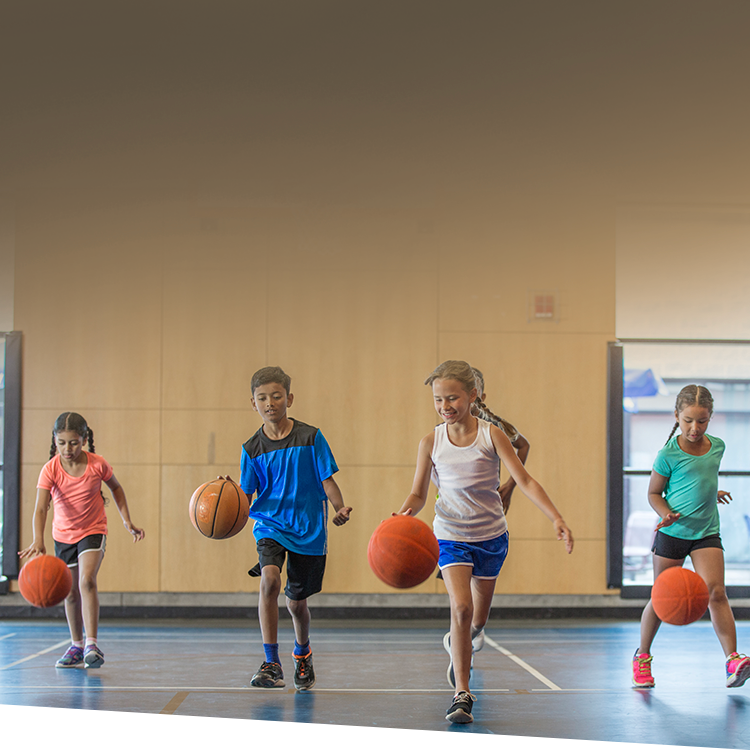What does a safe school look like?
When you think of safety, you might consider resource officers (such as an off duty police officer), card entry, security cameras, fencing, emergency drills, and the like.
This is a natural train of thought, but making your school a safer place requires far more than attending to just these few, albeit important, items. It’s not just about keeping the bad guys out!
Creating a safer school requires a holistic and intentional effort on the part of the school-wide community to identify risk in multiple areas, essentially creating a risk inventory. This work is then followed by the creation of processes and procedures to both mitigate problems, and where possible, to prevent untoward events from occurring in the first place.
Peter Bevelin, author of Seeking Wisdom: From Darwin to Munger, said, “I don’t want to be a great problem solver. I want to avoid problems—prevent them from happening and doing it right from the beginning.”
A Multi-tiered Approach to Safety
Elements that affect school safety include:
- people (your own community members, not just visitors);
- facilities (kitchen, labs, shops, playgrounds and fields);
- activities (sports and trips); and
- policies and procedures.
The following are a few items to consider under each of these categories. These should be elements in your overall approach.
People
Without people—that is kids, families, faculty, and staff—there is no school. People are the reason any institution exists.
You often are responsible for taking care of each other. So beyond compensation, benefits, and professional development, what does caring for your community look like?
According to Maslow's hierarchy of needs, two basic human needs are, in order, physiological (the need for food, water, homeostasis, etc.) and safety (of one’s own body, for family/friends, etc.).
How does this tie into your school’s safety and mission?
It’s difficult to be productive— to teach and to learn—if you don’t feel safe. Think about the last time you felt threatened, scared, or just uncertain.
In this state of mind, you were not functioning in the executive portion of your brain, where you can be productive and creative. Rather you were in the limbic or primitive area (also called flight or fight).
Your adrenal glands were releasing stress chemicals (cortisol, adrenaline, and norepinephrine). This doesn’t make you especially open to creativity and learning.
ISM’s research has found that one of the top reasons families choose private schools is because of the safe environments they provide—students and families must feel safe at your school.
Plans and Precautions to Promote Safety
When it comes to creating that safe environment, training offers a form of predictability and support. It informs, educates, and empowers your community members to be able to more effectively prevent, mitigate, and respond when necessary to an incident.
Survey your community
Survey your students, parents, faculty, and staff to understand their perceptions of your school’s safety. This can give you valuable insight as to where to focus your efforts.
Develop National Incident Management System (NIMS) complaint emergency response and emergency operating plans
Developing and testing an emergency response and emergency operating plan is central to your overall safety plan. The creation, implementation, practice, and communication of your plan must be visibly supported by the Board and School Head for it to come to life.
Create a safety committee
The creation of a safety committee or team can help to support your efforts. This team must develop a risk assessment and management process, focusing on the past (what things have led to unsafe situations or injury) as well as considering newer threats such as ride shares and the use of drones.
Work with local authorities
You should also involve local health authorities and first responders in your planning and testing. Most EMS departments are more than happy to be a part of your plan creation and participate in the testing of that plan in real-life functional drills.
Implement precautions
You should create procedures that can help prevent risks from occurring. Consider past emergencies, along with day to day activities and interactions, as you outline the following:
- Clear rules of engagement, defining how members of your community will and will not act toward one another
- An updated acceptable use policy, including discussion of the safe use of social media
- Training your school provides in the areas of bullying, harassment, sexual misconduct, and required reporter responsibilities
These documents should be part of your safety committee's assignments. Involve other resources as necessary, including attorneys, brokers, medical professionals, and insurance providers.
Conduct background checks
Background checks of staff, volunteers, and any vendor employees on campus (e.g., construction personnel) can help support a number of the above efforts.
The intent in all of this is to build a culture of awareness—not paranoia!

Tune in to live webinars every Wednesday during the school year to get specific, research-backed insight you can immediately apply at your school.
Facilities
A well-kept campus is critical to school safety. A multi-disciplined tactical site survey (buildings and grounds) with local emergency management is an important element in this effort. It can help determine if the following items or procedures exist.
- Limited entry points
- A key card entry system
- Security cameras
- Sign-in and sign-out procedures
- Visitor badges
- CPTED (crime prevention through environmental design)
- Trees and bushes maintained so as to not obstruct line of sight
- Well-lit and open hallways
- Glass in windows and classroom doors unobstructed
- Monitoring of bathrooms, stairwells, elevators, etc.
- Locking of any unused portions of campus (pool, gym, music room)
- Equipment certified and in proper working order (e.g., fire extinguishers, cameras, automated external defibrillators [AEDs], burglar alarms, sprinkler systems)
- Socket covers in the “little kids” areas
- GFIs for any sockets near a source of water, such as a sink
- Routine maintenance and record keeping of all school-owned vehicles
- Compliance with all OSHA requirements
- Proper storage and disposal of chemicals
- Hazard communication program with updated MSDS (material safety data sheet)
- Monitoring of drop-off and pick-up zones
- Routine maintenance of playground, athletic equipment, and fields
- Exit maps and functioning emergency and exit lights
- Exits clearly marked and unobstructed
- Designated gathering sites both on campus and off
- Morning and evening safety sweeps—conducting quick tours of campus looking for any out of the ordinary items, such as open doors, broken windows, and unrecognized parked cars
Activities
Co-curricular activities (such as athletics, art, music, theater, and travel) offer important complementary benefits to your school’s core curriculum. These important activities need to be conducted in a safe manner to provide their full benefit.
Sports
- Ensure there’s a protocol to certify and assure proper use of personal equipment, such as helmets, mouth guards, shoulder and shin guards.
- Conduct routine reviews of playgrounds, fields, and athletic equipment.
- Implement and follow a formal, physician-vetted concussion protocol.
Trips and travel
- Conduct pre-departure conversations with families.
- Ensure all waivers and health records are easily accessible.
- Vet vehicles and other modes of transportation.
- Have emergency and accident response protocols in place.
- Share your ride share policy with travelers before they go.
Policies and Procedures
Policies and procedures will ideally enhance safety efforts while supporting the school’s overall mission and culture.
A number of policies have been noted already, but here are a few more.
- An off-campus emergency response plan
- A data incident and breach protocol
- Personnel trained in Basic Life Support (BLS), CPR, and use of AED
- Protocols for calling 911
Finally, formal reporting and investigation protocols are critical to support these efforts. These inform your community members how, when, and to whom to report any concern for safety, such as misbehavior, abuse, or bullying.
Use of anonymous reporting applications, such as STOPit, SafeSchools Alert mobile app, and Report it (ostensibly for students, but used by adults as well) can be effective tools in this effort to bring concerns to light before they escalate.
Creating a Safe School Environment
As School Head, CFO, Facilities Manager, or other key administrator, you must keep safety at the forefront of your mind to support your school’s mission.
Intentionally establishing a broad-based, school-wide process is key. Remember, it’s not just about “bad guys.” Insufficient attention to many of these areas has historically, in aggregate, led to harm for students and staff.
There’s always more to do. Use these lists as a place to start and as a tool to review current practices. Identify any blind spots, and start there to provide additional efforts and resources.





